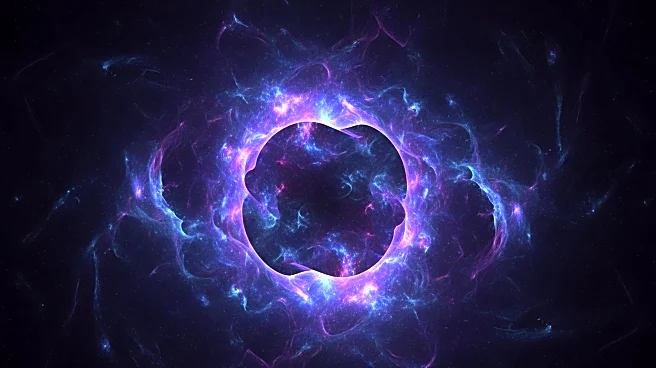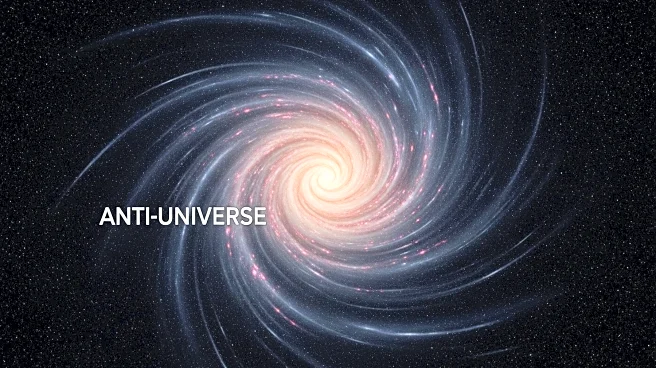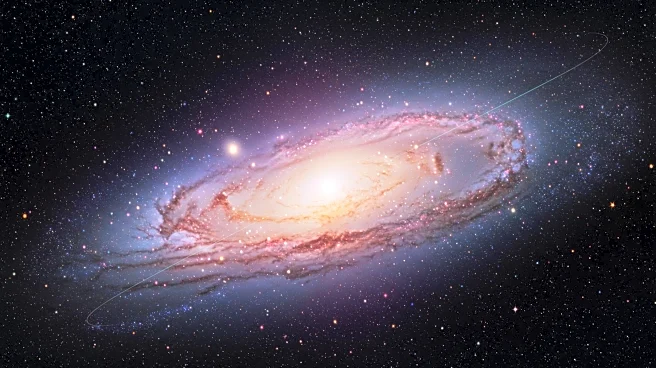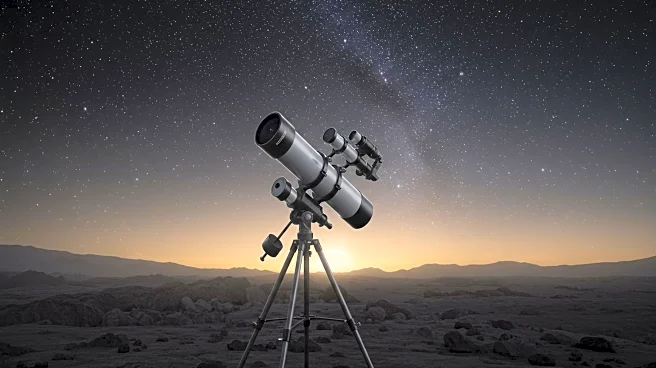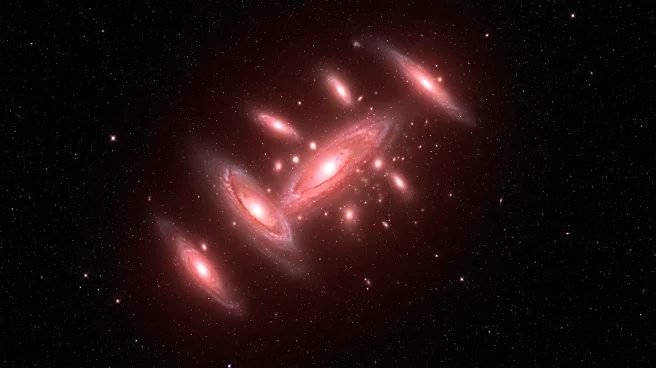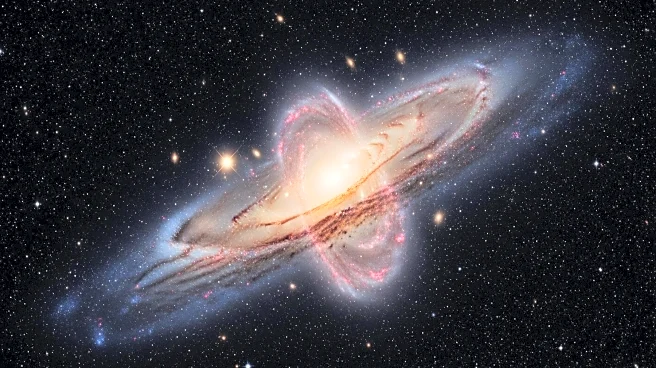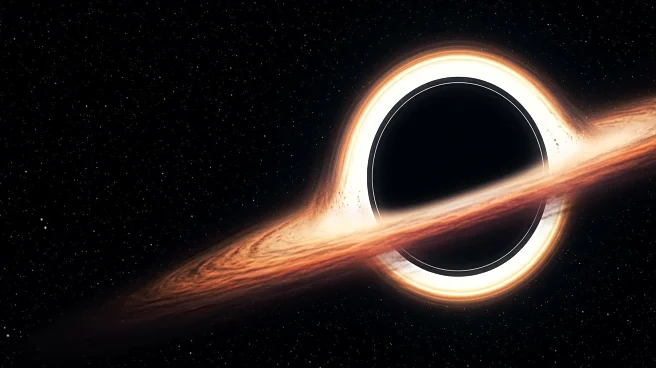What's Happening?
Scientists have introduced a theory suggesting the existence of an 'anti-universe' that runs backward in time, potentially explaining the presence of dark matter. This concept posits that dark matter could be right-handed neutrinos, which are mirrored versions of particles in our universe. The theory challenges traditional views of the Big Bang, proposing a symmetrical expansion of matter that could simplify explanations of cosmic phenomena. Researchers from the Perimeter Institute for Theoretical Physics have published findings that suggest the Big Bang might have been smaller and more symmetrical, removing the need for inflation—a period of rapid expansion post-Big Bang.
Why It's Important?
The implications of this theory are significant for cosmology, as it offers a novel explanation for dark matter, a mysterious component that constitutes a large portion of the universe's mass. Understanding dark matter is crucial for comprehending the universe's structure and evolution. If validated, this theory could reshape scientific approaches to studying the universe, influencing fields such as particle physics and cosmology. It may also lead to new methods of observing cosmic phenomena, potentially unlocking further mysteries of the universe.
What's Next?
Further research and experimentation are needed to test the validity of the 'anti-universe' theory. Scientists will likely explore the potential existence of right-handed neutrinos and their role in the universe's structure. This could involve advanced simulations and observations using cutting-edge technology. The scientific community may engage in debates and discussions to refine the theory and explore its implications for existing models of the universe.
Beyond the Headlines
The theory raises philosophical questions about the nature of time and existence, challenging conventional perceptions of the universe's timeline. It also highlights the importance of theoretical physics in expanding our understanding of reality, encouraging interdisciplinary collaboration to explore complex cosmic phenomena.
